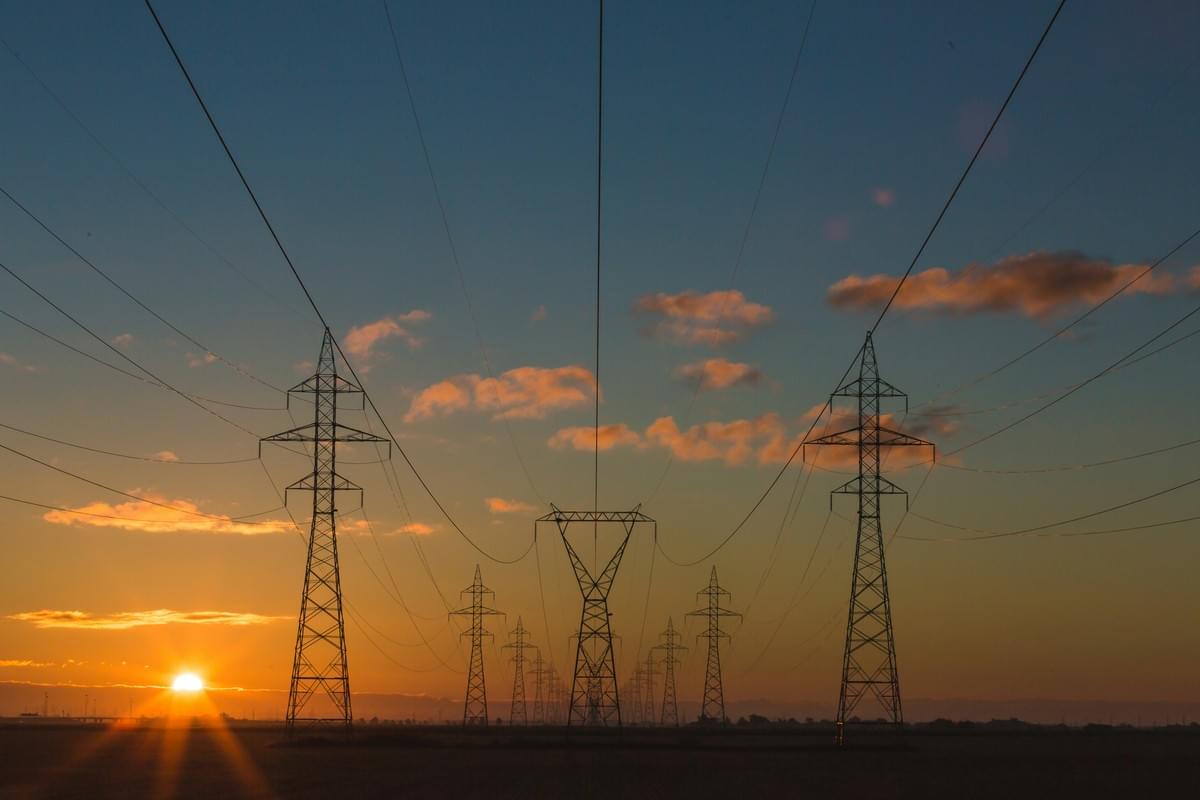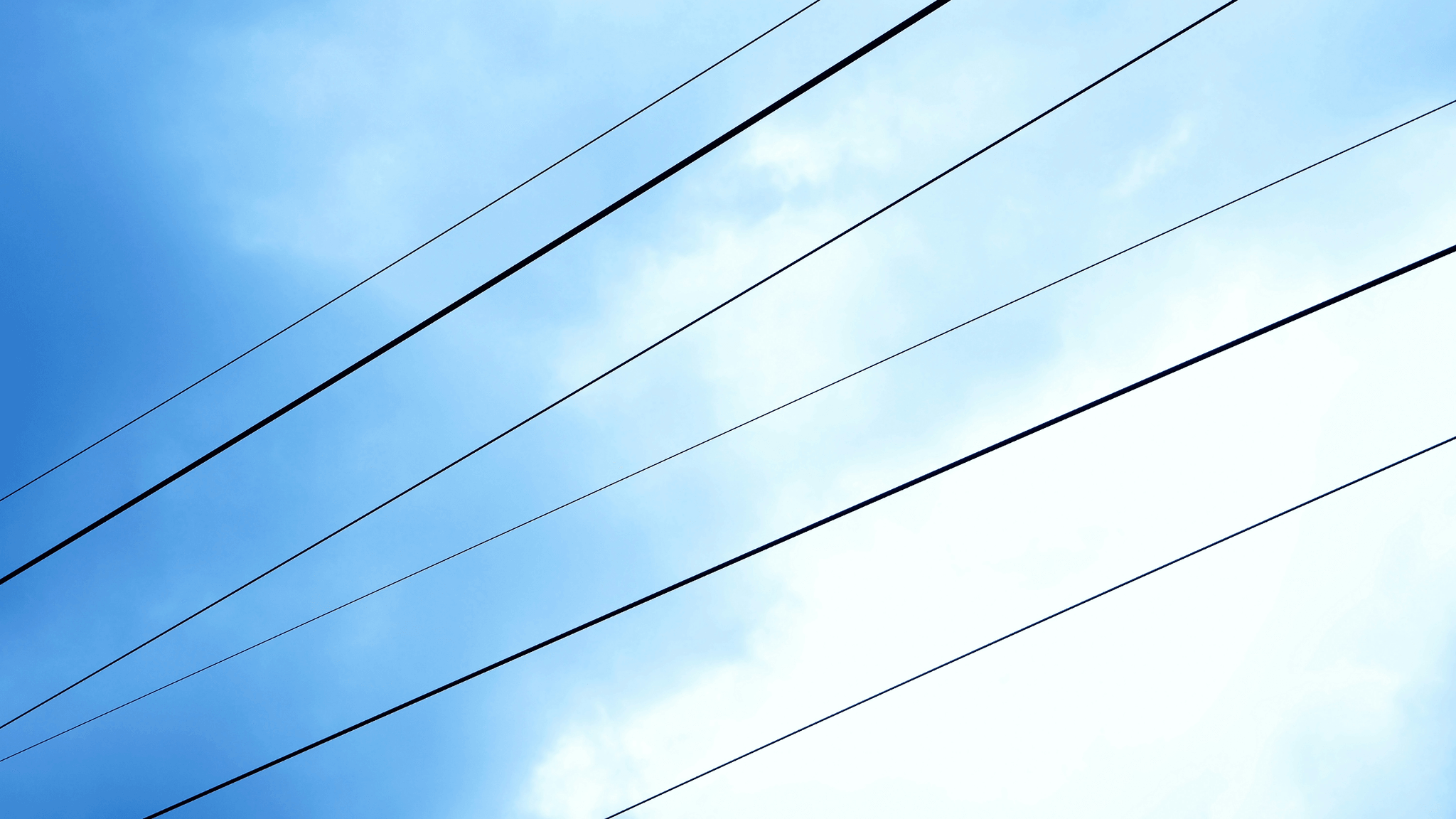Introduction

In the evolving landscape of telecommunications and energy distribution, Optical Ground Wire (OPGW) has emerged as a game-changer. This innovative technology combines the functionalities of traditional grounding systems with advanced fiber optic lines, paving the way for improved communication and safety in electrical infrastructure. Understanding what is OPGW opens the door to appreciating its significance in modern utility operations.
Understanding Optical Ground Wire
At its core, Optical Ground Wire (OPGW) is a specialized type of cable designed to serve dual purposes: it provides grounding for electrical systems while also facilitating high-speed data transmission through fiber optic wire cable. This unique construction typically consists of a central bundle of optical fibers encased within a protective aluminum or steel sheath, making it both robust and efficient. By incorporating fiber cable optic technology into an essential component of power lines, OPGW represents a significant advancement over conventional optical wire cable solutions.
Significance of Fiber Optic Lines
Fiber optic lines are crucial for modern communication systems due to their ability to transmit large amounts of data quickly and reliably over long distances. The use of fiber optic fiber has revolutionized how we connect devices, enabling everything from high-speed internet access to real-time data analytics in various industries. As we delve deeper into what is OPGW, it's essential to recognize that these fiber optic technologies not only enhance connectivity but also improve overall system resilience against external interferences.
Overview of OPGW Benefits
The benefits of OPGW are manifold, making it an attractive option for utility companies looking to modernize their infrastructure. By utilizing optical to optical cable connections within power lines, utilities can achieve enhanced communication capabilities without compromising safety or reliability. Furthermore, the integration of fiber optic technology leads to reduced maintenance costs and increased operational efficiency—key factors that underscore why transitioning to OPGW is not just beneficial but necessary in today’s digital age.
What Is OPGW?

Optical Ground Wire, commonly referred to as OPGW, is a specialized type of cable that serves a dual purpose: it functions as both a grounding conductor and a fiber optic line for telecommunication. This innovative technology combines the traditional role of ground wire with advanced fiber optic capabilities, allowing for high-speed data transmission alongside essential electrical grounding. Understanding what OPGW is and its components sets the stage for recognizing its significance in modern infrastructure.
Definition and Components
At its core, OPGW is an optical wire cable designed to be installed on overhead power lines. It typically consists of multiple fiber optic fibers encased within a protective aluminum or steel tube, which also serves as the grounding element. This unique structure not only ensures safety by protecting against lightning strikes but also provides robust communication capabilities through fiber optic wire cables embedded within.
The components of OPGW include the optical fibers themselves—often made from silica glass—which enable high-capacity data transmission. Additionally, the outer layer usually comprises weather-resistant materials that protect against environmental factors such as UV rays and moisture. Thus, when you ask what is OPGW, think of it as a powerful fusion of electrical engineering and cutting-edge telecommunications.
How OPGW Functions
OPGW functions by serving two primary roles: grounding electrical systems while simultaneously facilitating communication through fiber optic technology. The optical fibers within the cable transmit data using light signals, which allows for incredibly fast speeds—far exceeding those offered by traditional copper wires or coaxial cables. As these signals travel through the fiber cable optic, they remain immune to electromagnetic interference (EMI), making them ideal for environments with heavy electrical activity.
When installed on power lines, OPGW effectively connects substations and other utility facilities without requiring additional poles or infrastructures dedicated solely to telecommunications. This dual functionality not only saves space but also reduces installation costs significantly compared to separate systems for power and communication needs. In essence, when you utilize an optical to optical cable like OPGW, you’re optimizing both your energy distribution and your data transmission simultaneously.
Comparison with Traditional Ground Wire
Comparing OPGW with traditional ground wire reveals several advantages that highlight why this technology is becoming increasingly popular among utility companies worldwide. Traditional ground wires primarily serve one function: providing safety by directing stray currents safely into the ground during faults or lightning strikes; they lack any data transmission capabilities whatsoever. In contrast, fiber optic fiber integrated into OPGW offers extensive bandwidth capacity alongside reliable grounding solutions.
Moreover, traditional ground wires are susceptible to corrosion over time due to exposure to environmental elements; however, the materials used in constructing optical wire cables are engineered for durability and resilience against such degradation factors. Additionally, while conventional systems may require separate installations for communication lines—which can be costly and labor-intensive—OPGW streamlines this process by combining both functionalities into one efficient solution.
In conclusion, when considering what is OPGW versus traditional ground wire options available today, it’s clear that advancements in technology have paved the way for smarter infrastructure solutions that meet contemporary demands efficiently.
Advantages of Fiber Optic Technology

Fiber optic technology has revolutionized the way we transmit data, offering a plethora of advantages over traditional methods. At the heart of this transformation is the optical wire cable, which utilizes light to convey information at incredible speeds. By leveraging fiber optic lines, businesses and utilities can achieve seamless communication and connectivity.
Enhanced Data Transmission Speeds
One of the most remarkable benefits of fiber optic technology is its enhanced data transmission speeds. With fiber optic wire cables, data can travel at nearly the speed of light, allowing for rapid communication that outpaces conventional copper wires significantly. This means that whether it’s streaming high-definition videos or transferring large files, users experience minimal lag and buffering thanks to fiber fiber optic cable.
In practical terms, enhanced speeds translate into better overall performance for networks relying on optical to optical cable systems. As more devices connect and demand increases, having a robust infrastructure powered by fiber optic lines ensures that service providers can meet customer expectations effortlessly. Ultimately, enhanced data transmission speeds position organizations to thrive in an increasingly digital world.
Resistance to Electromagnetic Interference
Another standout feature of fiber optic technology is its impressive resistance to electromagnetic interference (EMI). Unlike traditional copper cables that are susceptible to interference from nearby electrical equipment or radio signals, optical wire cable operates using light signals that are immune to such disruptions. This inherent quality makes fiber optics particularly advantageous for environments with heavy machinery or electronic devices.
The resilience against EMI not only improves signal integrity but also enhances overall network reliability. Organizations deploying fiber optic lines can rest assured knowing their data will remain secure and uninterrupted even in challenging conditions. Consequently, this resistance fosters trust among users who depend on consistent connectivity for their operations.
Greater Bandwidth Capacity
When it comes to bandwidth capacity, nothing quite compares to what modern fiber optics offer. Fiber optic technology allows for a much greater amount of data transmission simultaneously compared to traditional options like copper wiring or coaxial cables. This increased capacity makes it possible for multiple applications—ranging from internet services to video conferencing—to run concurrently without compromising performance.
With advancements in technology pushing demands higher than ever before, having a solution with greater bandwidth capacity is essential for both businesses and consumers alike. The versatility provided by fiber optic lines enables utility companies and telecommunication networks alike to expand their services while maintaining optimal performance levels across all platforms utilizing the same infrastructure—truly a game-changer in today’s fast-paced world!
Combining Power and Communication

In today’s interconnected world, the need for efficient communication and power delivery has never been more critical. Optical Ground Wire (OPGW) serves as a groundbreaking solution that seamlessly merges these two essential functions. By integrating data transmission capabilities into the existing electrical infrastructure, OPGW is revolutionizing how utilities operate.
Dual Functionality of OPGW
So, what is OPGW? At its core, Optical Ground Wire combines traditional grounding functions with fiber optic technology to provide a dual-purpose solution. This clever design not only protects electric lines from lightning strikes but also allows for high-speed data transfer through the fiber optic wire cable embedded within it.
The fiber cable optic within OPGW enables real-time communication and monitoring of electrical systems, which enhances operational efficiency. This dual functionality means utility companies can streamline their infrastructure while reaping the benefits of fiber optic technology. Ultimately, this leads to improved service reliability and faster response times during outages or maintenance.
Integration with Electrical Infrastructure
Integrating optical wire cable into existing electrical infrastructure is a game-changer for modern utility companies. The installation of OPGW does not require significant alterations to current power lines; instead, it complements them by enhancing their capabilities without sacrificing safety or performance. This integration allows for a comprehensive approach to energy management, blending the best of both worlds: reliable power distribution and advanced communication networks.
Moreover, utility operators can easily monitor their systems using the fiber optic fiber embedded in OPGW, leading to proactive maintenance and reduced downtime. The synergy between electrical lines and optical to optical cable creates an efficient ecosystem where data flows freely alongside electricity. Such integration not only maximizes resource utilization but also supports smart grid initiatives that are becoming increasingly vital in today’s energy landscape.
Benefits for Utility Companies
The advantages of adopting Optical Ground Wire are numerous for utility companies looking to modernize their operations while maintaining cost-effectiveness. By utilizing fiber optic lines within their existing frameworks, utilities can enhance network resilience against outages caused by environmental factors like storms or lightning strikes—thanks largely to the grounding properties of OPGW combined with its robust data transmission capabilities.
Additionally, having access to real-time data helps utilities make informed decisions regarding load management and outage response strategies—ultimately improving customer satisfaction through quicker restoration times and better service quality overall. The implementation of optical wire cables allows these companies not only to keep pace with technological advancements but also positions them as leaders in innovation within a competitive industry landscape.
In summary, combining power delivery with communication through Optical Ground Wire represents a forward-thinking strategy that empowers utility companies while enhancing service quality across the board.
Practical Applications of OPGW

Optical Ground Wire (OPGW) is making waves across various industries, proving to be an essential component in modern infrastructure. Its unique blend of power transmission and high-speed communication capabilities allows it to serve multiple purposes simultaneously. This section will explore the practical applications of OPGW in electric utilities, telecommunication networks, and railways.
Use in Electric Utilities
In electric utilities, OPGW serves as a vital link between power transmission and data communication. By integrating fiber optic lines within the grounding wire, utility companies can monitor their systems more effectively while ensuring safety and reliability. The incorporation of fiber optic wire cable enhances operational efficiency, enabling real-time data transmission that is crucial for grid management.
Additionally, the use of fiber cable optic technology allows for improved fault detection and system diagnostics. With the ability to transmit vast amounts of information without interference, electric utilities can optimize their performance while reducing downtime during maintenance or outages. Thus, understanding what is OPGW becomes essential for any utility looking to modernize its infrastructure.
Role in Telecommunication Networks
Telecommunication networks have also greatly benefited from the deployment of OPGW technology. Fiber optic fiber embedded within the optical wire cable facilitates high-speed internet access and reliable communication services for consumers and businesses alike. As demand for bandwidth continues to grow exponentially, fiber optic lines provide a scalable solution that supports everything from mobile communications to broadband services.
Moreover, using optical to optical cable in telecommunication setups ensures minimal signal loss over long distances compared to traditional copper cables. This advancement leads not only to faster internet speeds but also enhances overall network reliability—an essential factor in today's digital age where connectivity is paramount. Clearly, incorporating what is OPGW into telecommunication strategies holds significant benefits.
Deployment in Railways
The railway industry has also embraced OPGW technology as part of its modernization efforts. By utilizing fiber optic wire cable along railway tracks, operators can enhance safety measures through better communication systems between trains and control centers. This integration helps improve signaling systems and real-time tracking capabilities—crucial elements for maintaining efficient operations on busy rail networks.
In addition to safety enhancements, deploying fiber cable optic solutions enables railways to implement advanced monitoring systems that track everything from train performance to environmental conditions along the tracks. Such innovations lead not only to improved passenger experiences but also contribute significantly toward optimizing operational costs over time. Thus, understanding what is OPGW becomes vital for stakeholders invested in railway advancements.
Spark Fittings and OPGW Solutions

When it comes to the installation and maintenance of Optical Ground Wire (OPGW), Spark Fittings stands out as a key player in providing innovative solutions. Their products are specifically designed to enhance the performance of fiber optic lines, ensuring that these vital connections remain robust and efficient. With a focus on quality, Spark Fittings offers various accessories that cater to the unique needs of fiber optic wire cable installations.
Innovative Products from Spark Fittings
Spark Fittings has developed a range of innovative products tailored for OPGW applications, making them indispensable in the realm of fiber optic technology. Their offerings include specialized connectors and splices that facilitate seamless integration between optical wire cable systems and traditional electrical infrastructure. By focusing on versatility, these products ensure that utility companies can maximize the benefits of fiber optic fiber while maintaining reliable power transmission.
The design philosophy behind Spark Fittings' products is rooted in enhancing user experience while addressing common challenges faced during installation. This commitment to innovation not only simplifies the process but also ensures that every fiber cable optic connection is optimized for performance and longevity. As utility companies transition towards using more advanced technologies, having reliable solutions from Spark Fittings becomes essential.
Importance of Quality Preformed Accessories
Quality preformed accessories play a crucial role in ensuring the effectiveness of any optical to optical cable system, particularly when dealing with OPGW installations. These accessories are designed to withstand harsh environmental conditions while providing optimal performance for fiber optic lines. Investing in high-quality preformed fittings means fewer maintenance issues down the road, allowing utility companies to focus on their core operations without worrying about frequent repairs.
Moreover, quality preformed accessories ensure that all connections within a fiber optic wire cable system maintain their integrity over time. This is especially important given the increasing demand for data transmission speeds and reliability across various industries. By prioritizing quality in their product offerings, companies like Spark Fittings help reinforce trust between service providers and their customers.
Supporting OPGW Installation and Maintenance
Spark Fittings understands that supporting OPGW installation goes beyond just providing top-notch products; it involves offering comprehensive solutions tailored for various operational needs as well. They provide detailed guidelines and expert support to assist utility companies throughout every step of their projects involving fiber optic technology—ensuring smooth deployment from start to finish.
Furthermore, ongoing maintenance is critical for sustaining optimal performance in any optical wire cable setup; hence Spark Fittings emphasizes training programs aimed at equipping technicians with essential skills related to OPGW systems and best practices in handling fiber cables optic efficiently. These efforts contribute significantly toward reducing downtime caused by maintenance issues while enhancing overall productivity.
In summary, with innovative products designed specifically for what is OPGW applications combined with an unwavering commitment to quality preformed accessories, Spark Fittings stands out as an industry leader dedicated not only to advancing technology but also supporting seamless integration into existing infrastructures.
Conclusion
In the rapidly evolving landscape of telecommunications and energy, the future of fiber optic lines looks incredibly promising. As technology advances, the integration of fiber optic wire cable into existing infrastructures will become more prevalent, driving efficiency and connectivity. The potential for innovation in optical wire cable applications is vast, paving the way for smarter cities and enhanced communication networks.
The Future of Fiber Optic Lines
Looking ahead, the role of fiber optic lines will only expand as demand for high-speed data transmission grows. Fiber optic fiber technology offers unparalleled advantages over traditional copper lines, such as increased bandwidth and reduced latency. With ongoing advancements in fiber cable optic manufacturing processes, we can expect even more robust solutions that cater to diverse industries.
Transitioning to OPGW in Energy
Transitioning to Optical Ground Wire (OPGW) represents a significant leap forward in energy infrastructure modernization. This dual-functionality solution not only enhances communication capabilities but also serves as a grounding system for electrical utilities. By adopting OPGW technology, utility companies can streamline their operations while benefiting from the superior qualities of fiber optic wire cable.
Key Takeaways on OPGW Benefits
In summary, understanding what is OPGW reveals its vital role in merging power transmission with advanced communication systems. The benefits of utilizing fiber optic cables are clear: higher data rates, resistance to electromagnetic interference, and greater capacity make it an ideal choice for modern applications. As we embrace this innovative approach with optical to optical cable solutions, we position ourselves at the forefront of technological advancement.

